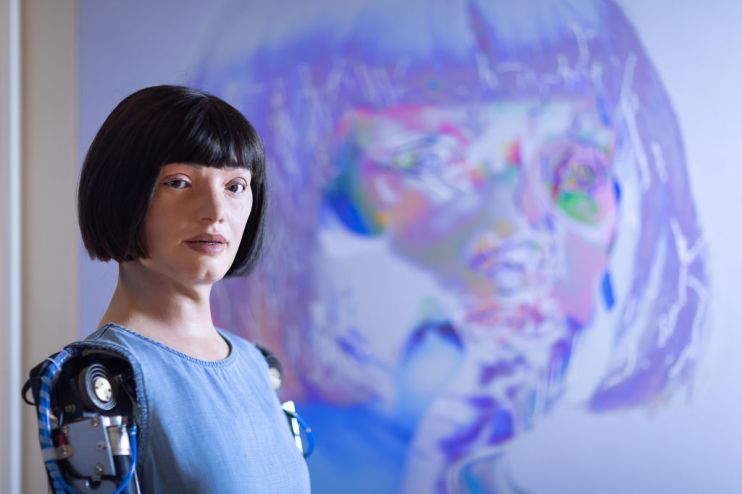No, it’s not sci-fi. Robots really could help dig us out of our low productivity spiral

Earlier this month, a robot named Ai-Da gave evidence to the House of Lords on the future of the creative industries. The members of the Lords Communications and Digital committee were fairly quite stumped. For all its weirdness, this episode proved a point: robots are among us.
When thinking of robots, many of us imagine a sci-fi future in which artificial intelligence overtakes society as we know it. In reality, robotics spans from straightforward automation systems – able to quickly organise products in a supply line – to algorithms able to learn and respond accordingly. The likes of Ai-Da are unlikely to steal our jobs. If anything, they could increase the UK’s productivity and opportunities.
The UK is at the forefront of research in artificial intelligence, broadly defined as the ability of a robot to perform tasks usually associated with humans. Think of Siri or Alexa – voice assistants able to answer questions and provide information. London-based DeepMind is one of the world’s leading companies in this space.
Artificial intelligence involves the most developed kind of robots, and poses challenging ethical questions. But robotics also means more elementary forms of automation that could be easily employed especially in industries like manufacturing, construction and agriculture.
Yet few companies do it. Ocado is the best British company when it comes to using robots, according to GlobalData. It employs automation in packaging, reducing time and costs and increasing efficiency. The model works well for the company – aside from a couple of robotics incidents, one of which saw an entire warehouse burnt down.
Boosting robot installations 30 per cent above the baseline could add an extra $4.9tn per year to the global economy by 2030, according to Oxford Economics. In the UK, up to 38 per cent of tasks in the construction sector could be automated. Yet current trends suggest less than 1 per cent of these will be automated before 2035, leaving the industry exposed to the continued risk of shortages.
Why is this the case? The UK has historically been a high-immigration country, so perhaps “that influx of people makes less of a necessity for robotisation”, says Eleanor Watson, an IEEE AI Ethics engineer. It’s also more simple – general distrust. When it comes to robots, people worry about the worst possible scenarios, so usage usually lags behind research in labs by as much as a decade. But right now, a tight labour market is threatening to cost the economy £30bn a year, so it might be time to reconsider.
“Often it’s not a question of can we do something technologically – we almost certainly can – but of dare we? Are people ready for it?”, summarises Watson. Quite fairly, people are more at ease with a robot serving them drinks at the restaurant than with one taking care of their elderly relatives in a care home. Innovations like these have been piloted, but are unlikely to become mainstream in the short term.
In some industries there is more progress. Automation is growing in agriculture with vertical farming. Dave Scott, of Intelligent Growth Solutions, has modified a system used in retail to automate processes – and brought it to farming. His 12m tall machine adjusts to temperature, humidity and rain levels. One robot does one or two crops at a time, checking how they’re growing and picking them up. The weather and crop diseases are not a problem when agriculture takes place in a controlled, automated environment.
But stories like Dave’s are few and far between. There’s even a measure for it, known as robot density. UK’s robot density per 10,000 workers was 101 in 2020 – low compared to the world average of 126 units. The UK is the only country in the G7 with robot density below that average. Yet from construction to manufacturing, robots could replace repetitive tasks freeing up space for more people to take on other positions, and could increase workers’ safety by performing risky tasks like inspecting towers or taking on maintenance work in offshore wind farms. These robots would need to be designed, managed and preserved, creating new jobs in turn. Perhaps it’s true, we’re not ready yet; but if we want the country to grow, we should be ready soon.